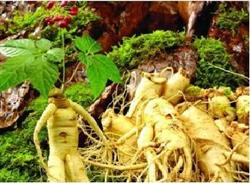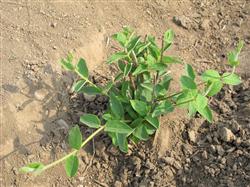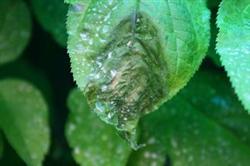Field-to-home cultivation techniques of bamboo ginseng

Bamboo ginseng, also known as Panax notoginseng, Panax noto Bamboo ginseng likes the cold and shady environment, likes to be fat and wet, and avoids direct sunlight. It grows in the deep humus layer under the alpine forest above 1200 meters above sea level. In the wild, bamboo ginseng is usually unearthed in the first and middle of May, spreads its leaves completely at the beginning of June, and blossoms in the middle and late June. The fruit matured in the middle and last ten days of August, and the aboveground plants withered in the first ten days of September. Its artificial cultivation must comply with its ecological requirements, and the main technical points are as follows: 1. Soil preparation of bamboo ginseng is suitable to grow in fertile and loose soil, either in mountain bubble soil or loam with thick humus layer, with a slope of 1520 degrees. The wasteland should be ploughed twice to remove weeds, stones, etc., and rake fine and level it. 2. make a border and set up a shade border with a width of 120cm to 140cm, a ditch depth of 25cm, a ditch width of 30cm and a height of 140cm to 160cm. The shade degree of seedling cultivation is controlled at 60%-70%, and 40%-50% after transplanting. 3. Fertilizer preparation Bamboo Ginseng requires a large amount of fertilizer and is more resistant to fertilizer. The base fertilizer is often made of fire soil, cake fertilizer, stable fertilizer, phosphate fertilizer or compound fertilizer. The application of pig and cow dung must be fully mature and fine, and the amount of fertilizer (667m2) is 3000 kg of soil fertilizer, 100kg of phosphate fertilizer and 100kg of cake fertilizer. 4. After the seeds of seedling transplanting and harvest were treated with gibberellin, they were sown in the middle and last ten days of September, sowed or sowed evenly. VOD is the best. The row spacing of 15 cm × 3 cm or 15 cm × 15 cm was sown on the flattened border surface and evenly covered with a layer of fine soil 3-5 cm thick. The 2-year-old seedlings can be transplanted after 2 years, and the 2-year-old seedlings are separated according to size in autumn (early and middle September), and transplant horizontally on the border surface. In the first year of transplanting, the row spacing is 14 cm × 14 cm, and after one year, the plant spacing is changed to row spacing. Remove 1 plant into 14 cm × 28 cm. It was transplanted again in the third year, and the planting was 28 cm × 28 cm. 5. Field management weeds 4-5 times in the whole year, keep the garden clean, combined with weeding and loosening soil 2 times, loosening soil is generally carried out in sunny days, topdressing fertilizer 1 times twice, topdressing mostly diluted human feces and urine, phosphate fertilizer, compound fertilizer and so on. Topdressing of human feces and urine is generally carried out at the flowering stage, and the amount of fertilizer application is 2000 kg to 3000 kg. In full bloom, combined with loosening the soil, 40 kg of calcium superphosphate was applied to promote fruit ripening and rhizome growth. 6. Pest control and epidemic disease is the main disease at the seedling stage, with an incidence of 15%-20%. When the disease occurs, the leaves are flooded in dark green, as if they had been scalded by boiling water, and soon all the palm leaves droop and the whole plant dies. It can be controlled by spraying plant stems and leaves with benzoammonium and dimethoate aqueous solution, once every 7 days, for 3 times in a row. It is not easy to be noticed in the early stage of root rot disease. When it is found that the aboveground part has withered, the rhizome has rotted. During the disease period, the root can be irrigated with 1 ∶ 1 ∶ Bordeaux solution, the diseased plant can be pulled out in time, and quicklime can be sprinkled on the disease hole. Pests include land tigers, grubs, etc. during the growing period, human feces and urine can be mixed with dimethoate, and in the later stage, combined with chemical fertilizer, soil long-acting insecticides can be mixed on the border. 7. Fresh use or sun drying after harvest and storage. Store in a ventilated and dry place to prevent moths.
- Prev

Seedling raising and High-yield measures of Honeysuckle cuttings
The buds, flowers and leaves of honeysuckle can be used as medicine to clear away heat and reduce inflammation; rattan is used as medicine to treat rheumatic bone pain; flowers can extract aromatic oil and honeysuckle dew; it is also an ornamental tree species cultivated in landscaping and garden. First, honeysuckle cutting seedlings honeysuckle can be propagated with seeds, but also with cutting and root propagation.
- Next

Ginseng Blight and its Control
Rain Water is big this year, and the high temperature and humidity are very suitable for the reproduction of ginseng blight. The optimum temperature for the occurrence of ginseng blight is the soil temperature of 10: 30 ℃, the soil temperature of 20: 26 ℃ is the most suitable for the disease, and the disease will stop when the temperature is below 5 ℃ and above 30 ℃. The main pathogen causing ginseng blight is flagellum subphylum, Phytophthora is true.
Related
- Fuxing push coffee new agricultural production and marketing class: lack of small-scale processing plants
- Jujube rice field leisure farm deep ploughing Yilan for five years to create a space for organic food and play
- Nongyu Farm-A trial of organic papaya for brave women with advanced technology
- Four points for attention in the prevention and control of diseases and insect pests of edible fungi
- How to add nutrient solution to Edible Fungi
- Is there any good way to control edible fungus mites?
- Open Inoculation Technology of Edible Fungi
- Is there any clever way to use fertilizer for edible fungus in winter?
- What agents are used to kill the pathogens of edible fungi in the mushroom shed?
- Rapid drying of Edible Fungi

